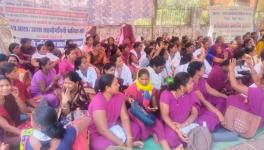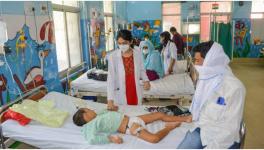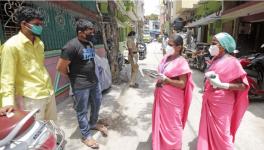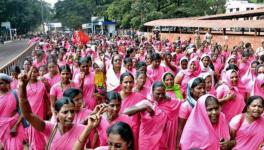Expansive Testing and Extensive Isolation Helped South Korea Contain COVID-19
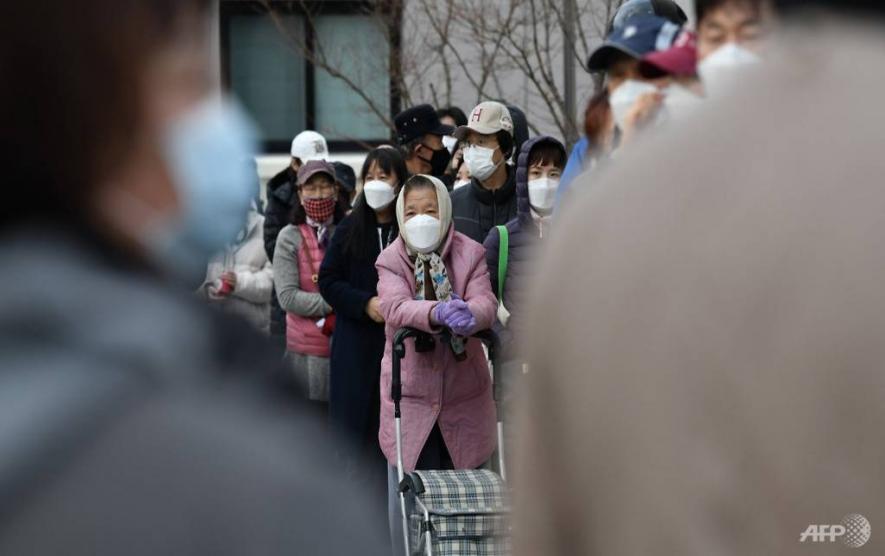
The COVID-19 (novel coronavirus disease) pandemic has a new epicentre in Europe. The worsening situation in Italy and the increasing number of deaths have been widely reported. Not only Italy, several other European countries like Spain, France and Germany are witnessing soaring numbers, both in terms of new infections as well as deaths. However, amid all these countries, South Korea has emerged as the second country to have a declining trend in COVID-19 cases, after China. S. Korea, a country with a total population 50 million, reported only 84 new cases on March 18 (according to WHO), which had a peak of 909 new cases reported on February 29.
S Korea’s approach has been different from that of China. Unlike China, Korea did not adopt lockdown of entire cities, rather what rescued it is its very expansive and well-organised testing system. In fact, its testing system is the most expansive in the world. As a result, the East Asian country was able to implement considerably successful tracing and isolation. Large numbers of people that tested positive were isolated and others in contact with them were traced, tested and monitored.
Reportedly, South Korea has tested over 2,70,000 people, which is 5,200 tests per one million population. According to the website Worldometer, which tracks up-to-date records of COVID-19 worldwide, S. Korea’s testing is more than any country, except Bahrain. The US has carried out 74 tests per million population till March 17, according to Science. This data, as per the Science report, has been revealed by the US CDC (Centre for Disease Control and Prevention).
“South Korea’s experience shows that diagnostic capacity at scale is key to epidemic control. Contact tracing is also very influential in epidemic control, as is case isolation,” said Raina MacIntyre, a scholar studying infectious diseases at the University of New South Wales, Sydney.
Also read: Which Country Is Spending How Much to Fight Coronavirus (COVID-19)?
But, the country cannot yet be said to be out of danger. The major portion of the testing, isolating and quarantine measures are linked to the Shincheonji Church. A massive cluster of more than 5,000 cases and 60% of the country’s total cases are linked with this Church. But for the extensive concentration on the region, other parts of the country may have been overlooked. New clusters are now appearing, which might engulf Seoul, the capital.
South Korea’s experience of its encounter with another coronavirus, the MERS, also taught it many aspects of handling an epidemic. In 2015, when MERS broke out in the country, Korean authorities had quarantined, tested and traced 17,000 people and the epidemic was contained within two months of its outbreak.
“That experience showed that laboratory testing is essential to control an emerging infectious disease,” said Kim Woo-Joo, an infectious disease specialist at Korea University. Oh Myoung-Don, another infectious disease specialist at Seoul University also said, “The MERS experience certainly helped us to improve hospital infection prevention and control. So far, there are no reports of infections of COVID-19 among South Korean healthcare workers.”
The Korea Centres for Disease Control and Prevention (KCDC) approved the first testing kit back in February 7, when the country had just few cases. The kit was then distributed to the regional health centres. The KCDC with collaborations of diagnostic manufacturers made those kits available.
High-risk patients with illness were given the first priority for hospitalisation and those with moderate symptoms were sent to the re-purposed corporate training facilities and spaces provided by public institutions, while those who were found to have recovered after testing twice were released. Those people with minimum symptoms, who could measure temperature by themselves and were free from chronic ailments were asked for self quarantine for two weeks. Importantly a local monitoring team was calling the self quarantined people twice a day to make sure they are inside homes and also to ask about the symptoms.
India is reportedly among the countries in the world where testing has been the poorest. As of early March, India’s number of tests per million population was equal to somewhere between an abysmally low 4 and 5.
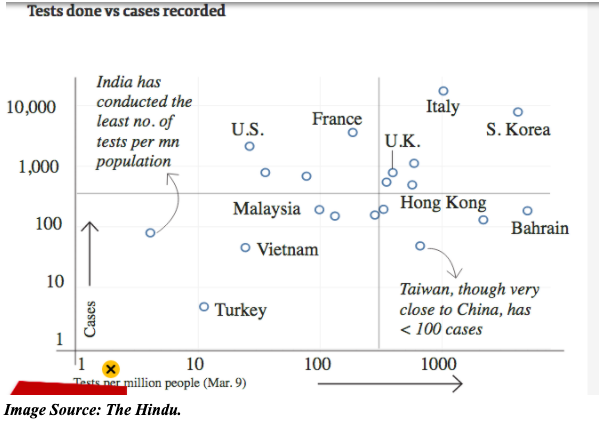
Considering the measures adopted across the world and especially from South Korea, it has become clear that better and large-scale testing contributes in a major way to containing such infectious diseases. Till now, medical authorities in India are saying that the country is yet to have community transmission. But with such a low level of testing any conclusion are suspect. India has to increase and widen its testing immediately in order to contain the disease spread.
Get the latest reports & analysis with people's perspective on Protests, movements & deep analytical videos, discussions of the current affairs in your Telegram app. Subscribe to NewsClick's Telegram channel & get Real-Time updates on stories, as they get published on our website.












